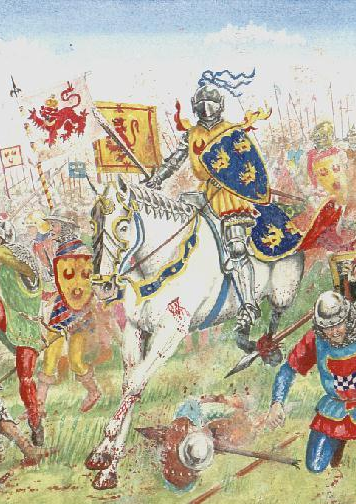|

"And
the Setons were ever a great house, zealous of honour, loyal unto
death."
The interests of dedicated
professional genealogists and the enthusiasm of amateur family
historians should not be denigrated merely because they have been
known occasionally to lead to eccentric passions and careless
misjudgements. The pursuit of a specific family's past and in
preserving the knowledge of the stories related to them, can
contribute much to the general understanding of life in other
centuries and ought to be encouraged as early as possible.
Obviously, amid the contemporary
deconstruction of the traditional family unit it is necessary to
introduce the subject to children with a measure of sensitivity,
and at times it may rightly be considered improper, but at some
stage all humans have to recognise they are the product of their
forebears, even if these forebears must remain individually
anonymous.
By preserving the stories of our forebears, we not only give them
life, but we enrich ourselves as to the knowledge of their
characters, and thereupon benefit from their examples.
George, 7th Lord Seton, concerned
for the memory of his family's origins, asked his nephew, Sir
Richard Maitland of Lethington, to "collect, gadder and set furth
the historie and cronicle of his hous and surname, quhilk has been
verray ancient and honorable." A copy of Lethington's manuscript,
annotated by George Seton, 4th Earl of Winton, includes a
memorable preamble. It is divided here into two parts, the first
of which is the more famous. The second is a pedagogic counsel
that reads pompously to twentieth-century eyes, yet it is not
without a naïve charm, and reflects much of what some great houses
truly believed.
An example by
the writer, Sir Walter Scott, in "The Abbott":
This door, which Roland
Graeme instantly approached, opened on a large and
well-lighted gallery, at the upper end of which he could hear
several voices, and the noise of hasty steps approaching
towards the hall or vestibule. A little recalled to
sober thought by an appearance of serious danger, he was
deliberating whether he should stand fast or retire, when
Catherine Seyton re-entered from a side door, running towards
him with as much speed as a few minutes since she had fled
from him.
“Oh, what mischief brought you
hither?” she said; “fly—fly, or you are a dead man,—or
stay—they come—flight is impossible—say you came to ask for
Lord Seyton.” She sprung from him and disappeared through the door
by which she had made her second appearance; and, at the same
instant, a pair of large folding-doors at the upper end of the
gallery flew open with vehemence, and six or seven young
gentlemen, richly dressed, pressed forward into the apartment,
having, for the greater part, their swords drawn.
“Who is it,” said one, “dare
intrude on us in our own mansion?”. “Cut him to pieces,”
said another; “let him pay for this day’s insolence and
violence—he is some follower of the Rothes.”. “No, by Saint
Mary,” said another; “he is a follower of the arch-fiend and
ennobled clown Halbert Glendinning, who takes the style of
Avenel—once a church-vassal, now a pillager of the church.”.
“It is so,” said a fourth; “I know him by the holly-sprig, which
is their cognizance. Secure the door, he must answer for
this insolence.”
Two of the gallants, hastily
drawing their weapons, passed on to the door by which Roland had
entered the hall, and stationed themselves there as if to prevent
his escape. The others advanced on Graeme, who had just
sense enough to perceive that any attempt at resistance would be
alike fruitless and imprudent. At once, and by various
voices, none of which sounded amicably, the page was required to
say who he was, whence he came, his name, his errand, and who sent
him hither. The number of the questions demanded of him at
once, afforded a momentary apology for his remaining silent, and
ere that brief truce had elapsed, a personage entered the hall, at
whose appearance those who had gathered fiercely around Roland,
fell back with respect..."My Lord Seyton"...
| 
